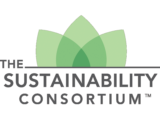Thriving Forests
Thriving Forests are vital for a thriving planet.
Forests are a critical component of a healthy planet. Slowing deforestation and restoring damaged forests could deliver a quarter or more of the carbon reductions needed by 2030 to avert dangerous climate change. Trees act as a massive carbon sink, provide natural habitat for millions of species of plants and animals, and protect watersheds by preventing erosion and acting as a natural water filtration system. For companies who care about sustainability and climate stability, forest protection must be a top priority.
At the same time, deforestation is a complex problem to solve. For many consumer products companies, deforestation hides deep in the supply chain. Beef, soy, palm oil, and pulp and paper are the major drivers of permanent deforestation globally, accounting for approximately 1.7 gigatons of annual greenhouse gas emissions. These commodities are pervasive of supermarket shelves and have complex supply chains that make understanding and mitigating deforestation very challenging.
The good news is that there are many resources already available to companies to help reduce deforestation. This pillar aims to compile these resources to assist companies in setting and exceeding ambitious deforestation goals.
Continue Reading

Featured Content
Explore Thriving Forests
Commodities
Just a handful of commodities — beef, soy, pulp and paper and palm oil — drive the majority of global deforestation. Halting deforestation from just these top four would remove about 1.7 gigatons of greenhouse gases from our atmosphere each year.
View All Commodities ResourcesRegions
Globally, deforestation hotspots occur in South America, Southeast Asia and Western Africa.
View All Regions ResourcesAssessing Risk
Assessing risk is an important first step in understanding where deforestation might be hiding in your supply chain. By mapping your supply to the major deforestation hotspots, you can better target your efforts to reduce deforestation in meaningful ways.
View All Assessing Risk ResourcesGoal Setting
Learn how to set meaningful and ambitious goals to address deforestation.
View All Goal Setting ResourcesSupply Chain Engagement
Engaging with your supply chain to drive improvement is the key to success. Here are resources that can be helpful in implementation.
View All Supply Chain Engagement ResourcesJurisdictional Approaches
Company efforts to clean individual supply chains are important, but when acting alone, they are insufficient to drive the change we need to see at scale. The Jurisdictional Approach aims to connect companies, governments and other stakeholders to work in concert to reduce deforestation across entire landscapes.
View All Jurisdictional Approaches ResourcesStakeholder Engagement
You are not in this alone. Look here for partners who are ready to help.
View All Stakeholder Engagement ResourcesMeasuring & Reporting
You can’t manage what you don’t measure. Here are tools that can help you measure progress in your supply chain, as well as account for environmental benefits.
View All Measuring & Reporting ResourcesFinancing & Incentives
Solving deforestation will require producers and other stakeholders to see that forests can be worth more alive than dead. Innovative financing mechanisms can work hand-in-glove with corporate efforts to scale change.
View All Financing & Incentives ResourcesRestoration & Protection
Find resources to help you consider how forest restoration and protection fit into your strategy.
View All Restoration & Protection ResourcesPolicy
While voluntary corporate actions to reduce GHG emissions are important, only public policy can deliver the pace and scale of reductions needed to avoid the worst impacts of climate change. That’s why policy advocacy is an essential element of corporate sustainability leadership. Companies can make a difference by supporting policies that reduce deforestation, unleash innovation and accelerate the transition to sustainable development.
View All Policy ResourcesBusiness Case
Consumers and investors are becoming increasingly aware of the implications of deforestation and climate change. Companies with strong deforestation controls can benefit from reduced reputational risk and enhanced customer loyalty.
View All Business Case ResourcesHalting deforestation from beef, soy, pulp & paper and palm oil would avoid about 1.7 gigatons of greenhouse gases from our atmosphere each year.
If you buy deforestation-risk commodities, there are many resources available to help you mitigate your risk.
Get StartedThriving Forests Resources
Looking for solutions that are uniquely relevant to you and your company? Here you can filter by resource title, date, type. Below (left) you can filter by narrowing categories and sub-categories, as well as where each resource sits on different levels of the sustainability journey.
Title
Date
Type
A new report from EDF+Business, with analytical and research support from Deloitte Consulting, LLP, provides specific recommendations for the transportation and agriculture sectors, and for the retail and technology industries. It also includes a roadmap with detailed action items that companies, industries and sub-sectors can take today relative to their own operations, investments, coordination and advocacy to drive meaningful change, fast.
01/25/2021
Report
How people shop is changing. Creating a transparent online marketplace that offers safe and sustainable products is critical.
08/19/2020
Guide
EDF’s Breanna Lujan details the ‘perfect storm’ driving Amazon deforestation rates up and explains why countries and companies need to do something about it.
08/03/2020
Blog
Learn about the six quality objectives that buyers can use to ensure they are purchasing high quality carbon credits.
07/15/2020
Report
Kealy Herman, WSP, discusses how to ensure that your corporate targets are aligned with current climate science and how to determine which approach is right for your organization.
10/31/2019
Webinar
Hundreds of companies, organization and initiatives have set or defined targets to reduce deforestation by 2020. What can we learn from our efforts over the last decade that can help us achieve more impactful results sooner?
10/29/2019
Webinar
The Supply Chain Leadership Ladder is a maturity model that BSR has developed for companies to evaluate and evolve their approach to supply chain sustainability.
10/08/2019
Report
Theresa Eberhardt, EDF, discusses how to transition from goal-setting to implementation when quantifying your scope 3 emissions.
09/30/2019
Webinar
AT&T and the DOE's Argonne National Laboratory discuss the Climate Change Analysis Tool, which enables AT&T to visualize the impacts of climate change on business operations 30 years into the future.
09/30/2019
Webinar
Supply Change offers an extensive resource library on deforestation that companies can use to understand the issue and make progress.
09/16/2019
Database
This page provides a collection of resources related to reducing deforestation in your supply chain.
06/16/2019
Guide
This pitchbook provides a “menu” of on-the-ground programs in Mato Grosso, and makes it simple for companies to connect to the broader Mato Grosso PCI strategy and achieve their own supply chain goals.
05/29/2019
Handbook
Load More


















